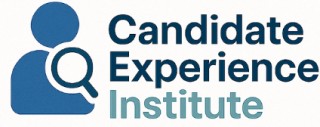
Understanding Harassment in the Workplace
Recognizing the Forms and Implications of Harassment
Understanding harassment in the workplace begins with recognizing its various forms and the serious implications it has on both employees and the organization. Workplace harassment can manifest in physical or verbal behaviors of a sexual nature, creating an unsafe environment where employees feel threatened or uncomfortable. This detrimental behavior not only impacts the mental well-being of individuals but also deteriorates the overall workplace culture, hindering productivity and morale. Implementing effective harassment prevention policies, alongside ongoing training programs, is essential in fostering a respectful and free workplace environment. The role of understanding the role of a screening interview is crucial in ensuring that potential employees align with an organization's values and commitment to a harassment-free culture. By proactively cultivating an environment that does not tolerate harassment, your organization will establish a foundation of trust and respect, encouraging every employee to contribute their best.The Role of Leadership in Cultivating a Safe Culture
Leadership's Influence on a Respectful Workplace
In any organization, leadership plays a pivotal role in shaping the workplace culture. A harassment-free environment begins with leaders who understand the importance of fostering a respectful and inclusive atmosphere. Their behavior sets the tone for what is acceptable and what is not, influencing how employees feel and interact with one another.
Leaders must actively demonstrate their commitment to a harassment-free workplace by implementing and upholding robust harassment policies. This involves not only setting clear expectations but also ensuring that these policies are consistently enforced. When leaders prioritize harassment prevention, they help cultivate a culture where employees feel safe and valued.
Training and Policies as Tools for Prevention
Effective training programs are essential in educating employees about workplace harassment, including its various forms such as sexual harassment. Prevention training should be mandatory for all employees, including leadership, to ensure a comprehensive understanding of what constitutes inappropriate behavior. This training should also cover how to report incidents and the support systems available within the organization.
Moreover, leaders should regularly review and update harassment policies to reflect current best practices and legal requirements. By doing so, they reinforce their commitment to maintaining a harassment-free work environment and demonstrate that they take these issues seriously.
Leadership Accountability and Continuous Improvement
Accountability is crucial in promoting a harassment-free culture. Leaders must be held accountable for their actions and decisions, ensuring they align with the organization's values and policies. Regular feedback mechanisms can help identify areas for improvement and ensure that the workplace remains a safe and respectful space for all employees.
By fostering an environment of continuous improvement, leaders can address unconscious biases and other barriers to a harassment-free workplace. This proactive approach not only benefits the current workforce but also enhances the overall candidate experience, making the organization more attractive to potential employees.
Impact of Harassment on Candidate Experience
Ensuring a Positive Experience for Potential Employees
In any organization, harassment has far-reaching consequences that can detrimentally affect the candidate experience. Workplace harassment can instill a sense of uncertainty and fear among potential candidates, leading them to question whether your organization fosters a culture of respect and safety. Candidates often perceive this as a reflection of the internal workplace culture, prompting them to search for indications of a harassment-free environment during the hiring process. Potential employees are increasingly scrutinizing company values and practices. When an organization has a reputation for workplace harassment, it discourages individuals from wanting to be a part of such an environment, affecting the organization's ability to attract top talent. This highlights the significant impact harassment has; not only does it harm those directly involved, but it jeopardizes the broader perception of the company. Promoting policies that focus on harassment prevention and cultivating a respectful work environment can aid in building a positive candidate experience. Initiating transparent anti-harassment messages, both internally and externally, is a vital step. When employees feel safe and respected, it encourages potential candidates to view your company favorably. An organization that invests in comprehensive harassment prevention training and actively applies their harassment policies sends a clear message: their commitment to a respectful workplace culture is non-negotiable. Leaders play a crucial role by setting clear expectations for behavior and holding everyone accountable. This leadership commitment reassures candidates that they will enter a supportive environment where inappropriate behavior is not tolerated, making your organization more appealing to prospective employees. By effectively addressing unconscious bias and encompassing diverse, inclusive practices, companies not only enhance current employee satisfaction but also bolster their reputation among future job seekers. For more insights into creating a candidate experience that reflects these values, consider exploring techniques on crafting effective questions for supervisor interviews.Identifying and Addressing Unconscious Bias
Recognizing Subtle Signs and Tackling Implicit Bias
Implicit or unconscious bias often operates invisibly within workplace environments, yet it can significantly impair one's ability to foster a harassment-free culture. Biases are deep-seated inclinations or judgments that subtly influence behavior and decisions; they exist outside of our conscious awareness, often contradicting what we consider fair or respectful. In the context of workplace harassment prevention, unconscious biases can manifest in ways that impact hiring processes, promotions, and everyday interactions. These biases can lead employees to make assumptions about their colleagues based on gender, race, or other personal characteristics, perpetuating a work environment that feels unwelcoming or inequitable to some individuals. Addressing these unconscious biases requires active effort from organization leaders and employees alike. Here are some strategies to help identify and mitigate these issues within your organization:- Awareness and Education: Training sessions are crucial in helping employees understand their own biases and how these biases can affect workplace culture. These sessions should emphasize the importance of being vigilant against inappropriate behavior of a sexual nature or any form of workplace harassment.
- Assessment Tools: Leveraging assessment tools and exercises can help uncover underlying biases. For instance, introducing scenarios or case studies during training can provide insight into individual reactions and biases, fostering greater awareness and understanding.
- Open Discussions: Encourage open dialogue about diversity and inclusion at work. This involves discussing how biases may influence employee interactions and decision-making, reinforcing the need for a free workplace where everyone can feel respected and valued.
- Policy Implementation: Cultivating a harassment-free work environment also calls for clear harassment policies. These policies should be grounded in a deeper understanding of how biases can contribute to workplace harassment. Regular reviews and updates of these policies ensure they remain effective and relevant.
Creating Policies and Training for a Harassment-Free Workplace
Building a Framework for Prevention
Creating a harassment-free workplace begins with establishing comprehensive policies and training programs. These initiatives are crucial in setting the tone for a respectful work environment and ensuring that all employees understand the expectations and consequences related to workplace harassment.
Developing Comprehensive Policies
Anti-harassment policies should be clear, accessible, and regularly updated to reflect the evolving nature of workplace dynamics. These policies must define what constitutes harassment, including behavior of a sexual nature, and outline the procedures for reporting and addressing complaints. A well-drafted harassment policy serves as a cornerstone for a respectful workplace culture, helping employees feel secure and valued.
Implementing Effective Training Programs
Training is a vital component in promoting a harassment-free culture. Prevention training should be mandatory for all employees, from entry-level staff to top leadership. These sessions should cover the nuances of workplace harassment, including unconscious bias and its impact on behavior. By fostering a deeper understanding of these issues, organizations can empower their workforce to contribute to a respectful and inclusive environment.
Engaging Leadership in Training
Leadership plays a pivotal role in modeling the behavior expected within the organization. When leaders actively participate in harassment prevention training, it reinforces the importance of these initiatives and demonstrates a commitment to maintaining a safe work environment. This involvement can significantly influence the workplace culture, encouraging employees to follow suit.
Regular Review and Updates
To ensure the effectiveness of harassment policies and training, organizations should regularly review and update these programs. This process involves gathering feedback from employees and staying informed about best practices and legal requirements. By continuously improving these initiatives, companies can maintain a proactive stance against workplace harassment, fostering a culture of respect and safety.
Feedback Mechanisms and Continuous Improvement
Implementing Effective Feedback Mechanisms
Creating a harassment-free workplace requires more than just policies and training; it demands a robust feedback system that empowers employees to voice their concerns. A well-structured feedback mechanism is crucial for identifying issues early and ensuring continuous improvement in your organization’s culture.
Feedback mechanisms should be accessible and anonymous to encourage employees to report incidents without fear of retaliation. This can be achieved through digital platforms or suggestion boxes strategically placed within the workplace. Regularly reviewing and acting on feedback demonstrates your commitment to a respectful work environment.
Continuous Improvement Through Regular Assessments
To maintain a harassment-free culture, organizations must regularly assess their policies and training programs. This involves gathering data on the effectiveness of current measures and identifying areas for improvement. Regular assessments help ensure that your anti-harassment strategies remain relevant and effective in addressing workplace harassment.
Consider conducting annual surveys to gauge employee perceptions of the workplace culture and the effectiveness of harassment prevention training. Use this data to refine your policies and training programs, ensuring they align with the evolving needs of your workforce.
Encouraging Open Dialogue
Promoting open dialogue about harassment and workplace behavior is essential for fostering a culture of respect and understanding. Encourage employees to engage in conversations about these topics during team meetings or dedicated workshops. This not only raises awareness but also helps employees feel more comfortable discussing sensitive issues.
Leadership plays a pivotal role in setting the tone for open dialogue. By actively participating in these discussions, leaders can demonstrate their commitment to a harassment-free workplace and inspire employees to follow suit.
In conclusion, a comprehensive approach to feedback and continuous improvement is vital for cultivating a harassment-free work environment. By implementing effective feedback mechanisms, conducting regular assessments, and encouraging open dialogue, your organization can create a workplace culture that prioritizes respect and safety for all employees.













